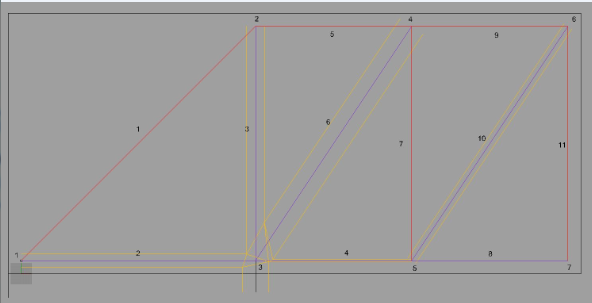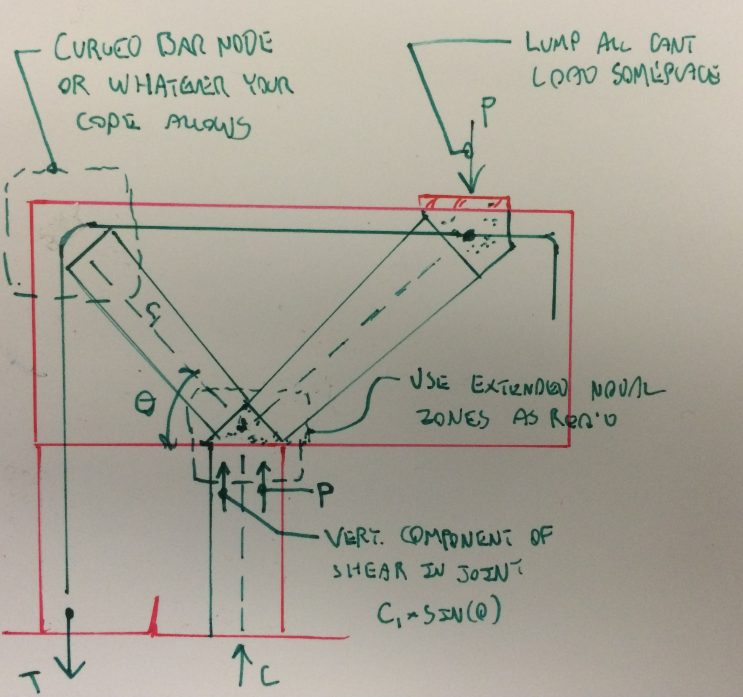handoflion
Structural
Hi All,
I'm doing a quick strut and tie analysis and ran into an issue with the numbers that I can't seem to get my head around.
See attached rough hand calcs.
I'm working out the stresses at a non-hydrostatic node, in my first trial I have a support width of 282.3 mm. I work out the principal compressive stress in the node to be 27.2 MPa, which exceeds the allowable stress of 21.6 MPa.
I then increase the support width to 500 mm to check to see if this works. I adjust my geometry and again go through working out the principal stress. As you can see, my guess of 500 mm results in the normal stresses on the two faces being almost equal to each other. This results in a Mohr's circle with an origin of 65.7 MPa and a radius of 54.1 MPa. The maximum principal stress is 119.8 MPa and minimum is 11.6 MPa - what's going on here???
Is someone able to explain this anomaly, or more likely, point out the error in my ways?
Thanks in advance.
Robbie
I'm doing a quick strut and tie analysis and ran into an issue with the numbers that I can't seem to get my head around.
See attached rough hand calcs.
I'm working out the stresses at a non-hydrostatic node, in my first trial I have a support width of 282.3 mm. I work out the principal compressive stress in the node to be 27.2 MPa, which exceeds the allowable stress of 21.6 MPa.
I then increase the support width to 500 mm to check to see if this works. I adjust my geometry and again go through working out the principal stress. As you can see, my guess of 500 mm results in the normal stresses on the two faces being almost equal to each other. This results in a Mohr's circle with an origin of 65.7 MPa and a radius of 54.1 MPa. The maximum principal stress is 119.8 MPa and minimum is 11.6 MPa - what's going on here???
Is someone able to explain this anomaly, or more likely, point out the error in my ways?
Thanks in advance.
Robbie

![[sleeping2] [sleeping2] [sleeping2]](/data/assets/smilies/sleeping2.gif) !
!![[bigears] [bigears] [bigears]](/data/assets/smilies/bigears.gif)


![[sad] [sad] [sad]](/data/assets/smilies/sad.gif)